Im trying to get the per-pixel transformation to fit one image (+ background) to a result. Background Image + Input image should be transformed into desired result
to achieve this i am using the PyTorch gridsampler and autograd to optimize the grid. The transformed input will be added to the unchanged background.
ToTensor = torchvision.transforms.ToTensor()
FromTensor = torchvision.transforms.ToPILImage()
backround= ToTensor(Image.open("backround.png"))
pic = ToTensor(Image.open("pic.png"))
goal = ToTensor(Image.open("goal.png"))
empty = empty.expand(1, 3, empty.size()[1], empty.size()[2])
pic = pic.expand(1, 3, pic.size()[1], pic.size()[2])
goal = goal.expand(1, 3, goal.size()[1], goal.size()[2])
def createIdentityGrid(w, h):
grid = torch.zeros(1, w, h, 2);
for x in range(w):
for y in range(h):
grid[0][x][y][1] = 2 / w * (0.5 + x) - 1
grid[0][x][y][0] = 2 / h * (0.5 + y) - 1
return grid
w = 256; h=256 #hardcoded imagesize
grid = createIdentityGrid(w, h)
grid.requires_grad = True
for i in range(300):
goal_pred = torch.nn.functional.grid_sample(pic, grid)[0]
goal_pred = (empty + 0.75 * goal_pred).clamp(min=0, max=1)
out = goal_pred
loss = (goal_pred - goal).pow(2).sum()
loss.backward()
with torch.no_grad():
grid -= grid.grad * (1e-2)
grid.grad.zero_()
FromTensor(out[0]).show()
these are the result:
It is actualy working with this this easy example, but I observe some weird behaviour. The grid just starts to change on one side. Why is this so, and why doesn't the complete grid change instantly? Is there some obvious part I am missing?
